wikiHow is a “wiki,” similar to Wikipedia, which means that many of our articles are co-written by multiple authors. To create this article, 19 people, some anonymous, worked to edit and improve it over time.
There are 10 references cited in this article, which can be found at the bottom of the page.
This article has been viewed 80,339 times.
Learn more...
Yoga Nidra (also known as Yogic Sleep) is a powerful relaxation technique that you can do when you gain some control over the relaxation response. When practiced right, this technique can be as restorative as sleep, while remaining fully conscious. If, however, you don't practice it successfully, and you fall asleep, the sleep will be just as restorative as successfully performing Yoga Nidra.
Steps
Preparing
-
1Find a recording of someone reading aloud Yoga Nidra instructions. To induce Yoga Nidra, you must listen to a set of instructions, similar to guided meditation. You can listen to a friend reading the instructions, but listening to a recording by someone else or by you yourself is more practical. A good recording will have a soft, soothing feel, while being clear. Many people prefer female recordings, but you can also find many male recordings, if that works for you. Some well-recorded videos are:
-
2Prepare blankets, a soft mat, or other comfortable surface to sit or lie on. For Yoga Nidra to be successful, you must be comfortable. If you have a memory foam mattress or mat, this is the best thing to use. If not, any pillows or mats will work. Some people prefer to elevate their feet, or head.Advertisement
-
3Prepare any comforts such as incense, a candle, a mister, etc. You don’t want to be breathing toxic fumes, artificial fragrances, or any bad smells when practicing yoga. Scents can be geared specifically towards encouraging emotional reactions. Some foster tranquility, calming our nervous system; others promote a sense of joy and energy.[1]
-
4Wear loose clothing. You'll want clothing that is comfortable and breathes easily. This can help deter any unsuccessful attempts because you are not comfortable. You don't necessarily need specific yoga clothes, just loose and breathable clothes.
-
5Warm up with sun salutations, or Surya Namaskar. Doing a few rounds of sun salutations, or Surya Namaskar, can effectively prepare your muscles and mind to practice yoga. If this does not relax you, try learning a few yoga asanas. There are a wide variety of yoga poses, or asanas, that one can practice and they range from difficult and strenuous to simple and relaxing.[2]
-
6Make the room as quiet as possible. To fully concentrate the mind, it must be silent. However, in today's busy times, it may be impossible. Instead of focusing on making the room silent, focus on making the room quiet.[3]
Practicing Yoga Nidra
-
1Lie flat on your back, with your arms stretched out by your sides (or however feels most comfortable). It is also an option to sit in a comfortable position, but some have found using this position to be unsuccessful. If you choose to lie down, extend your body as far as you can, flattening your body out. Position your head wherever it feels most comfortable.
-
2Close your eyes. Relax your eyelids, letting them simply lie on your eyeballs, not squeezing them shut.[4]
-
3Take a couple deep breaths, emphasizing exhalation. Breathe in through your nose, gradually filling your lungs with air, then exhale through your mouth. Try to inhale and exhale on a 10-second count.
-
4When the recording tells you to, rotate and visualize said body part. Focus only on that body part, not allowing your mind to become distracted by other things.
-
5Repeat step 4 until you have rotated and visualized all body parts. You should now feel completely relaxed, all tension gone.
-
6Become aware of your entire body. As you did with each body part, visualize your entire body just as it is now. For some people, it helps to visualize a glowing aura around themselves.[5]
-
7Prepare to return to ordinary consciousness. Gently move your fingers for a few moments, take a deep breath, and then open your eyes. Expect to come out of Yogic Sleep naturally, whether you return after only 15 minutes or a whole hour.
-
8Return to a sitting position. Do not get up, or try to aggressively rouse yourself. Simply sit criss-cross, or if you are more advanced, try sitting in the lotus position.
-
9If you want, or if you have time, finish up with some asanas. This will help your body to become fully awake, and completely out of Yogic Sleep.[6]
Warnings
- It is not advisable to do yoga nidra immediately after lunch because you might end up experiencing only nidra (sleep) and no yoga![8]⧼thumbs_response⧽
References
- ↑ https://www.webmd.com/balance/stress-management/aromatherapy-overview
- ↑ https://www.yogajournal.com/practice/yoga-sequence-prepare-yoga-nidra
- ↑ https://www.apartmenttherapy.com/how-to-block-bothersome-ambient-noises-191472
- ↑ https://www.artofliving.org/yoga/health-and-wellness/yoga-nidra
- ↑ https://www.yogajournal.com/meditation/10-steps-of-yoga-nidra
- ↑ https://www.yogajournal.com/practice/10-yoga-poses-do-every-day
- ↑ https://nutritionic.com/yoga-nidra-for-sleep-anxiety/
- ↑ https://www.artofliving.org/us-en/yoga/health-and-wellness/yoga-nidra-tips
- https://www.dummies.com/health/exercise/yoga/how-to-perform-yoga-nidra-yogic-sleep/
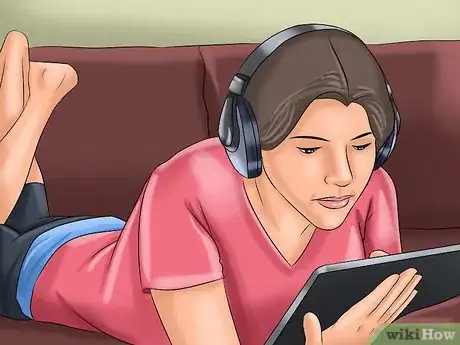

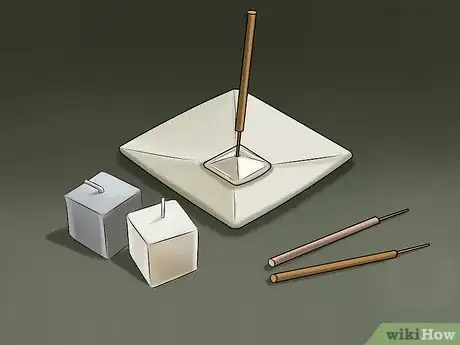

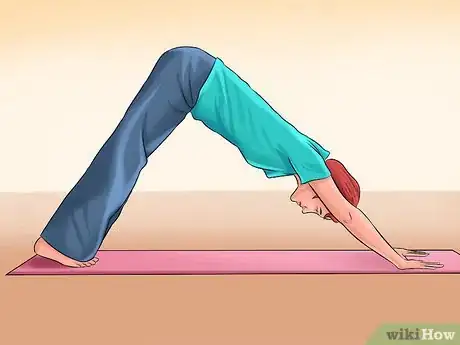

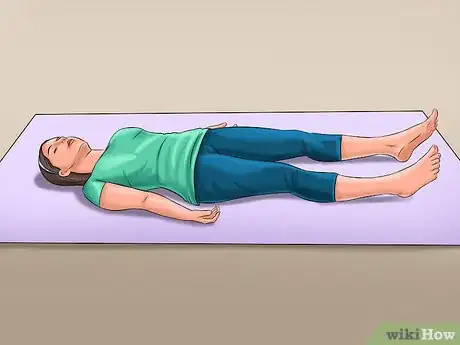
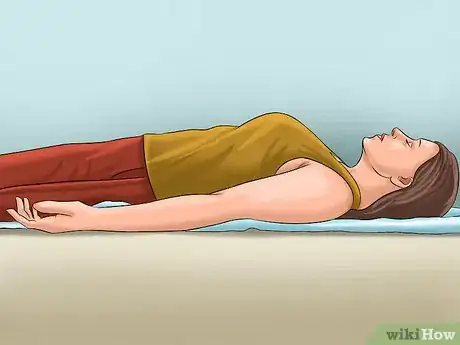

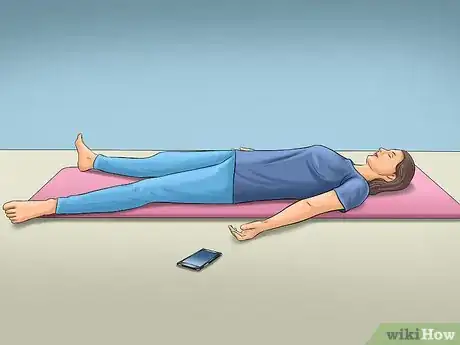
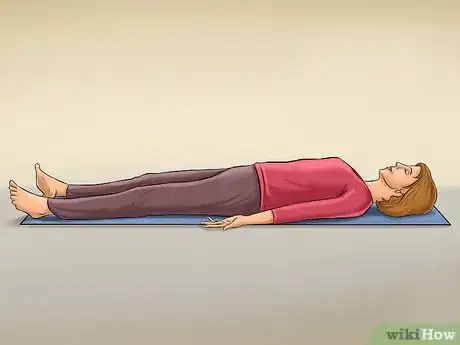
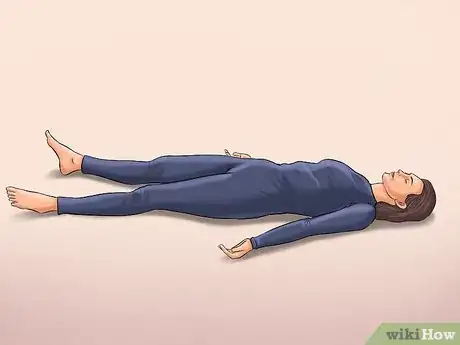

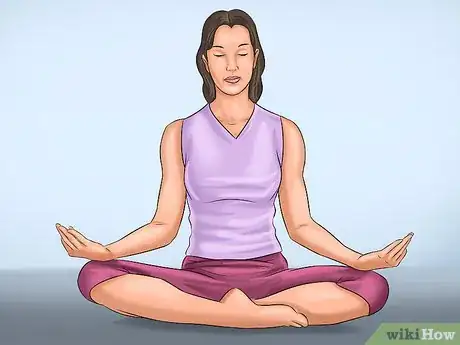
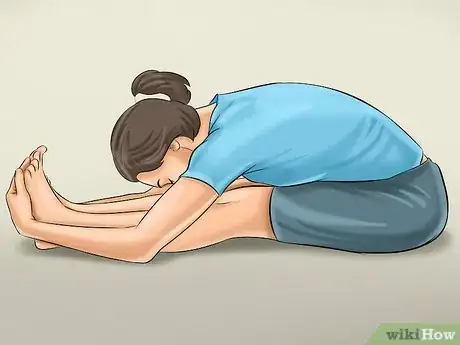










-Step-16.webp)













































